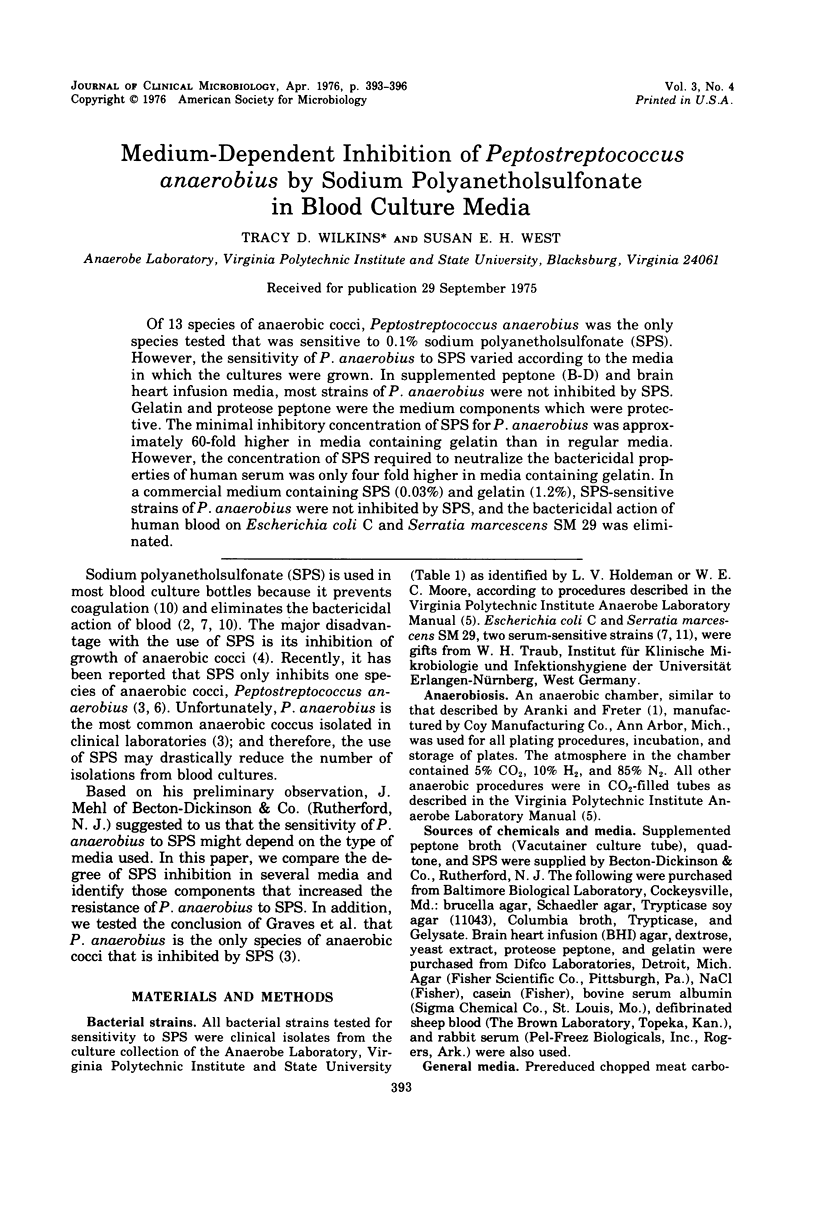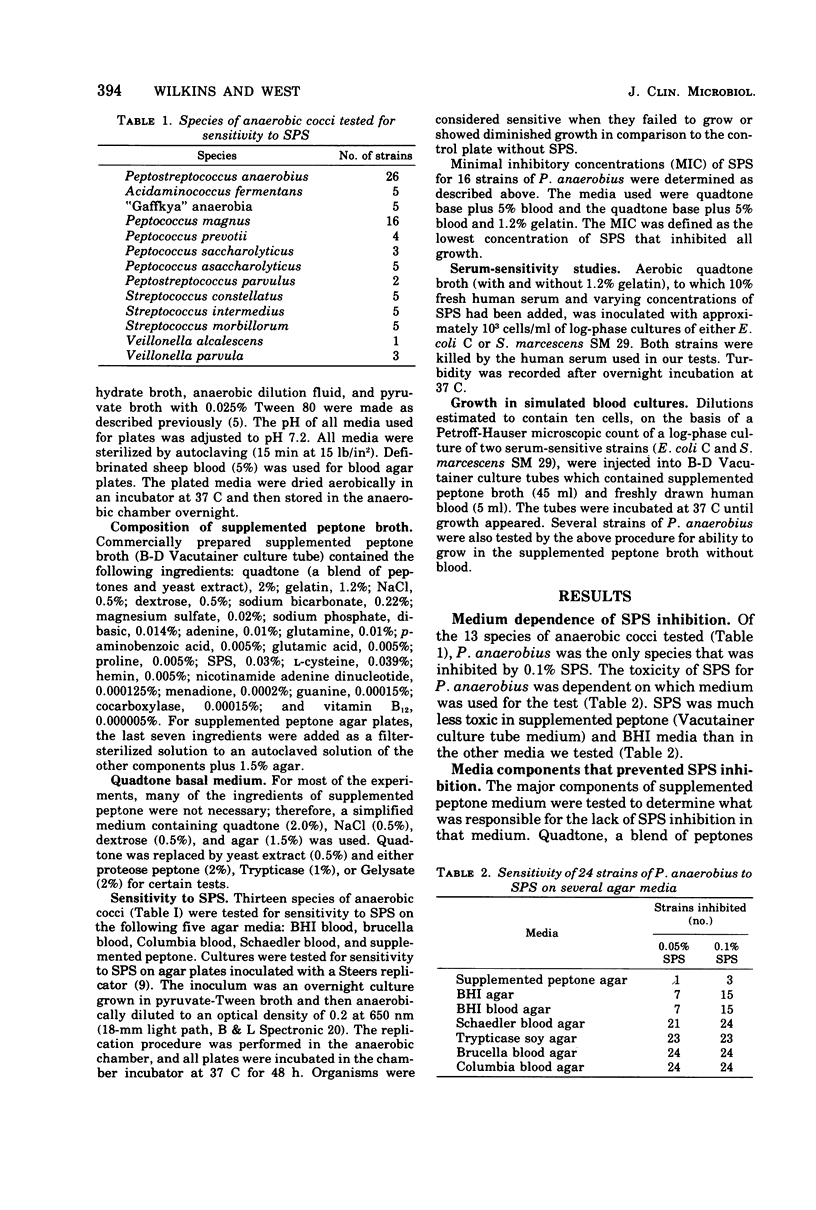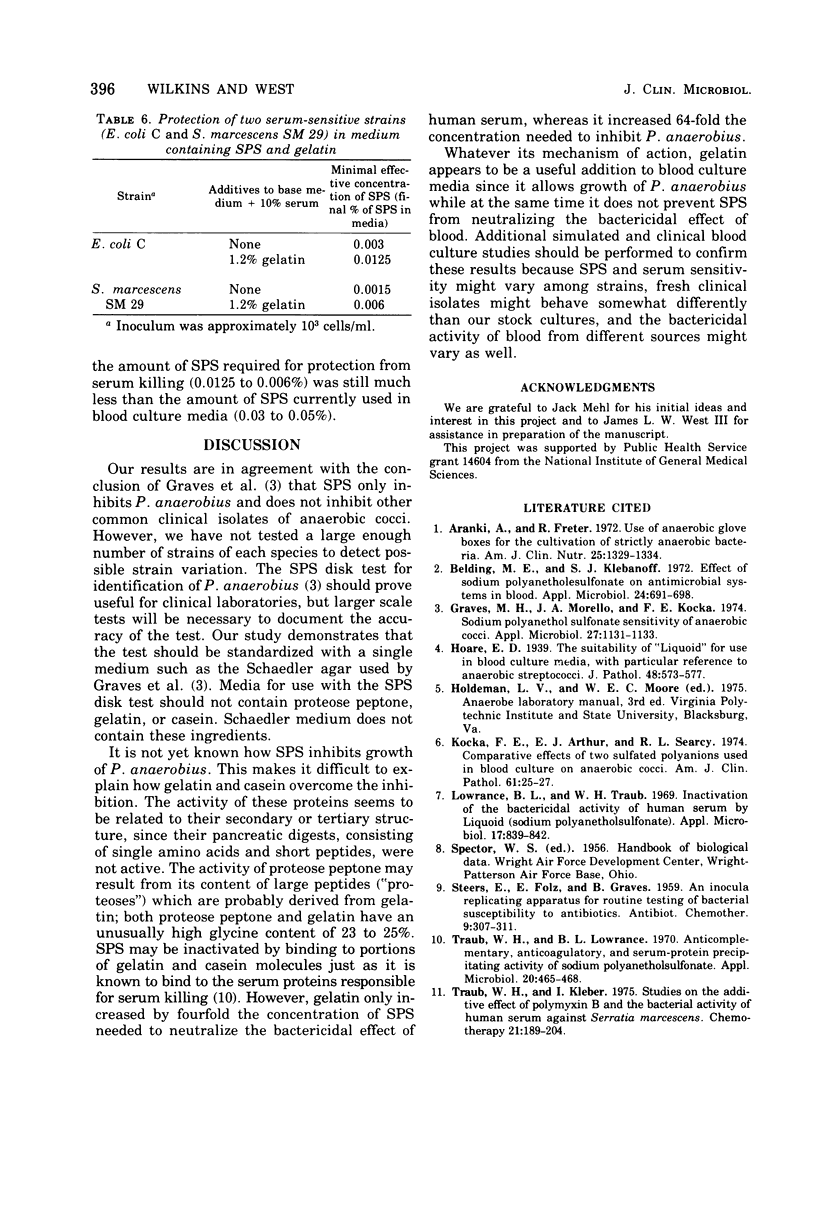Abstract
Of 13 species of anaerobic cocci, Peptostreptococcus anaerobius was the only species tested that was sensitive to 0.1% sodium polyanetholsulfonate (SPS). However, the sensitivity of P. anaerobius to SPS varied according to the media in which the cultures were grown. In supplemented peptone (B-D) and brain heart infusion media, most strain of P. anaerobius were not inhibited by SPS. Gelatin and proteose peptone were the medium components which were protective. The minimal inhibitory concentration of SPS for P. anaerobius was approximately 60-fold higher in media. However, the concentration of SPS required to neutralize the bactericidal properties of human serum was only four fold higher in media containing geltain. In a commerical medium containing SPS (0.03%) and gelatin (1.2%), SPS-sensitive strains of P. anaerobius were not inhibited by SPS, and the bactericdal action of human blood on Escherichia coli C and Serratia marcescens SM 29 was eliminated.
Full text
PDF



Selected References
These references are in PubMed. This may not be the complete list of references from this article.
- Aranki A., Freter R. Use of anaerobic glove boxes for the cultivation of strictly anaerobic bacteria. Am J Clin Nutr. 1972 Dec;25(12):1329–1334. doi: 10.1093/ajcn/25.12.1329. [DOI] [PubMed] [Google Scholar]
- Belding M. E., Klebanoff S. J. Effect of sodium polyanetholesulfonate on antimicrobial systems in blood. Appl Microbiol. 1972 Nov;24(5):691–698. doi: 10.1128/am.24.5.691-698.1972. [DOI] [PMC free article] [PubMed] [Google Scholar]
- Graves M. H., Morello J. A., Kocka F. E. Sodium polyanethol sulfonate sensitivity of anaerobic cocci. Appl Microbiol. 1974 Jun;27(6):1131–1133. doi: 10.1128/am.27.6.1131-1133.1974. [DOI] [PMC free article] [PubMed] [Google Scholar]
- Kocka F. E., Arthur E. J., Searcy R. L. Comparative effects of two sulfated polyanions used in blood culture on anaerobic cocci. Am J Clin Pathol. 1974 Jan;61(1):25–27. doi: 10.1093/ajcp/61.1.25. [DOI] [PubMed] [Google Scholar]
- Lowrance B. L., Traub W. H. Inactivation of the bactericidal activity of human serum by liquoid (sodium polyanetholsulfonate). Appl Microbiol. 1969 Jun;17(6):839–842. doi: 10.1128/am.17.6.839-842.1969. [DOI] [PMC free article] [PubMed] [Google Scholar]
- Traub W. H., Kleber I. Studies on the additive effect of polymyxin B and the bactericidal activity of human serum against Serratia marcescens. Chemotherapy. 1975;21(3-4):189–204. doi: 10.1159/000221860. [DOI] [PubMed] [Google Scholar]
- Traub W. H., Lowrance B. L. Anticomplementary, anticoagulatory, and serum-protein precipitating activity of sodium polyanetholsulfonate. Appl Microbiol. 1970 Sep;20(3):465–468. doi: 10.1128/am.20.3.465-468.1970. [DOI] [PMC free article] [PubMed] [Google Scholar]


